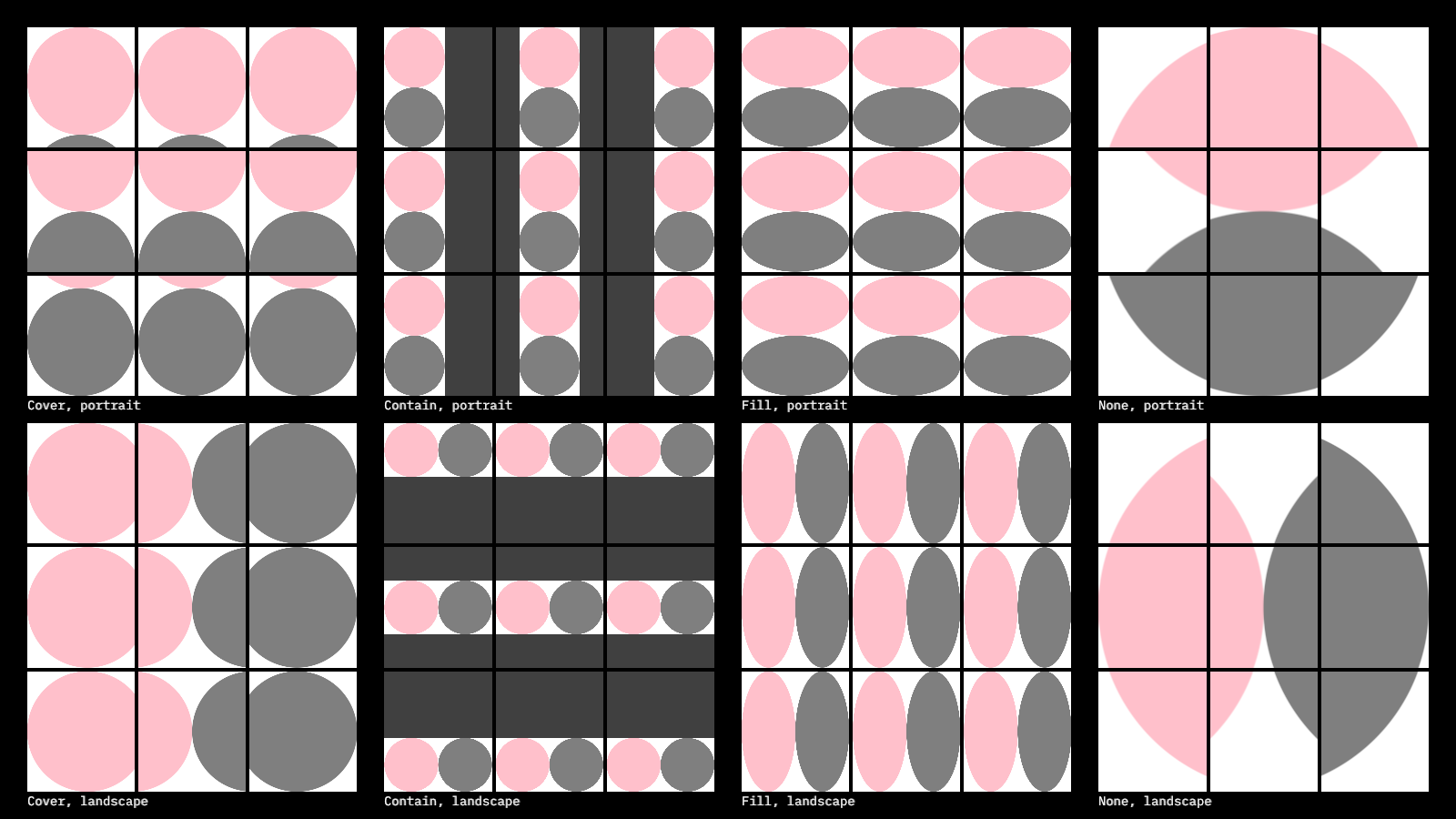Draws an image ensuring it fits or covers the specified Rectangle.
Similar to CSS object-fit (https://developer.mozilla.org/en-US/docs/Web/CSS/object-fit)
orx-image-fit provides the Drawer.imageFit extension function.
drawer.imageFit(
img: ColorBuffer,
x: Double, y: Double, w: Double, h: Double,
horizontalPosition: Double,
verticalPosition: Double,
fitMethod: FitMethod)or
drawer.imageFit(
img: ColorBuffer,
bounds: Rectangle,
horizontalPosition: Double,
verticalPosition: Double,
fitMethod: FitMethod)img: the image to drawx,y,w,horbounds: the target area where to draw the imagefitMethod:FitMethod.Contain: fitsimgin the target area. If the aspect ratio ofimgandboundsdiffer it leaves blank horizontal or vertical margins to avoid deforming the image.FitMethod.Cover: covers the target area. . If the aspect ratio ofimgandboundsdiffer part of the image will be cropped away.FitMethod.Fill: deforms the image to exactly match the target area.FitMethod.None: draws the image on the target area without scaling it.
horizontalPositionandverticalPosition: controls which part of the image is visible (Cover,None) or the alignment of the image (Contain).horizontalPosition:-1.0= left,0.0= center,1.0= right.verticalPosition:-1.0= top,0.0= center,1.0= bottom.
A quick example that fits an image to the window rectangle with a 10 pixel margin. By default
imageFit uses the cover mode, which fills the target rectangle with an image.
fun main() = application {
program {
val image = loadImage("data/images/pm5544.png")
extend {
drawer.imageFit(image, 10.0, 10.0, width - 20.0, height - 20.0)
}
}
}or
fun main() = application {
program {
val image = loadImage("data/images/pm5544.png")
extend {
drawer.imageFit(image, drawer.bounds.offsetEdges(-10.0))
}
}
}